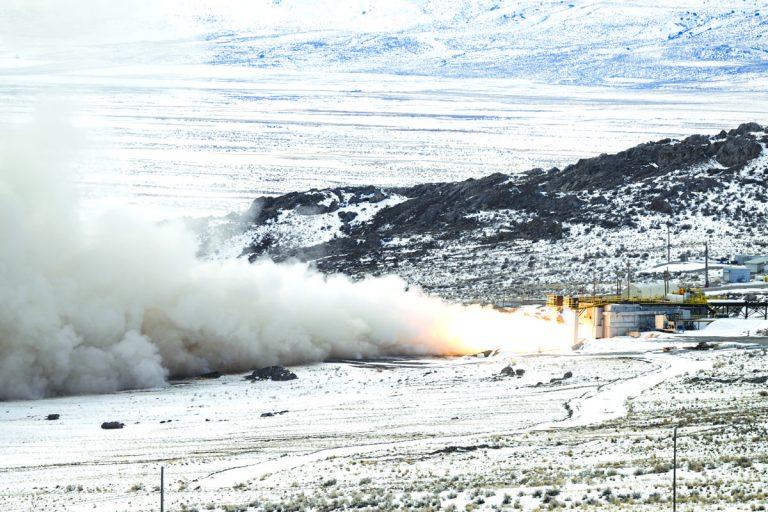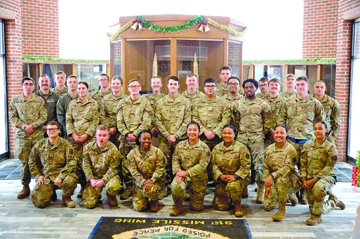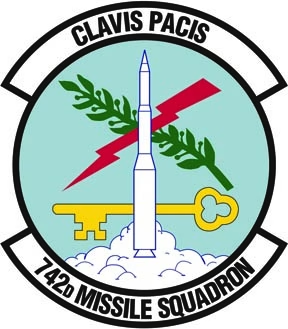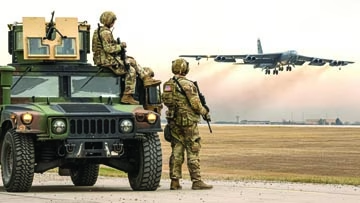BARKSDALE AIR FORCE BASE, La. —
The United States Air Force is replacing the 54-year-old LGM-30G Minuteman III intercontinental ballistic missile (ICBM) weapon system with the LGM-35A Sentinel ICBM. Rejuvenation of ICBMs has been under way for years despite news of this modernization effort recently ramping up due to its increased relevance and estimated budget.
Nuclear deterrence is the backbone of America’s national security and is supported by the U.S. Nuclear Triad. Air Force Global Strike Command’s ICBMs make up the land-based leg of the Triad and are the most responsive leg, having stood around-the-clock alert since 1959.
Minuteman ICBMs have been around for more than six decades, with the current model first becoming operational in the early 1970s. A number of the system’s original components have been upgraded over the last 50 years, but a majority of the system’s infrastructure is made up of the original equipment.
While proactive maintenance, small upgrades, and routine testing techniques allow Minuteman ICBMs to continue providing responsive nuclear deterrence, upgrading to Sentinel ICBMs ensures the land-based leg of the nuclear Triad remains safe, secure and effective.
As implied by the name, the Minuteman III ICBMs have a quick-launch capability, with the ability to launch within minutes of receiving a valid launch order. Before the Minuteman III, the Air Force utilized liquid-fueled rockets, which required more preparation time and posed more safety risks due to their volatile nature. Solid-fuel Minuteman missiles were simpler to maintain and easier to produce.
Minuteman III ICBMs are the fourth model of Minuteman missiles (IA, IB, II and III), and many upgrades over the decades have improved their efficiency and capabilities. While this process allowed for effective strategic deterrence for over 50 years, the system needs to be modernized.
In October 2006, Congress passed the National Defense Authorization Act for Fiscal Year 2007, with Section 139 directing the Secretary of the Air Force to modernize the Minuteman III.
From this point on, modernization of the Minuteman III became a top priority for the Department of Defense.
On September 8, 2020, the Department of Defense and the Secretary of the Air Force announced that the Department of the Air Force awarded an Engineering and Manufacturing Development contract of $13.3 billion for a tested and fully qualified design of the GBSD to Northrop Grumman.
“Modernizing the nuclear strategic Triad is a top priority of our military,” said Former Defense Secretary Dr. Mark Esper. “It’s key to our nation’s defense. It provides that strategic nuclear deterrent that we depend on day after day – that we’ve depended on decade after decade.”
In April 2022, the Secretary of the Air Force announced that the Air Force’s new GBSD ICBM was given its official weapon system name, the LGM-35A Sentinel.
“The name Sentinel recognizes the mindset that thousands of Airmen, past and present, have brought to the deterrence mission, and will serve as a reminder for those who operate, secure, and maintain this system in the future about the discipline and responsibility their duty entails,” said Secretary of the Air Force Frank Kendall.
In 2023, Air Force Global Strike Command stood up a new directorate, the Intercontinental Ballistic Missile Modernization Directorate (AFGSC/A10), at Barksdale Air Force Base (AFB), Louisiana. This new directorate is responsible for overseeing and coordinating the activities of the Air Force in support of the deployment of the LGM-35A Sentinel ICBM weapon system and the retirement of the LGM-30G Minuteman III ICBM weapon system.
“Section 1638 of the [Fiscal Year 2023 National Defense Authorization Act] directed the establishment of the Sentinel Intercontinental Ballistic Missile Site Activation Task Force within Air Force Global Strike Command,” said Gen. Thomas A. Bussiere, AFGSC Commander. “Brig. Gen. Colin Connor will lead the ICBM Modernization Directorate [AFGSC/A10], which organizationally consists of a Sentinel Operating Location team, a Sentinel Requirements Division, and a Sentinel Operations Division. I have absolute confidence that he and the entire A10 team will prepare the command for one of the most critical upgrades to our nation’s deterrence capabilities in history.”
At the beginning of this past July, the Under Secretary of the Air Force Melissa Dalton, Chief Master Sgt. of the Air Force David Flosi, and several other senior leaders visited F.E. Warren AFB to discuss nuclear modernization and better understand the vital role of the ICBM force with the Striker Airmen of AFGSC’s Twentieth Air Force and 90th Missile Wing.
“After meeting these Airmen, and learning about their creativity and innovation, I’ve never been more confident in our military’s ability to deter threats to the U.S. and our allies,” Dalton added. “We owe it our Airmen to ensure that we modernize the force.”
That same month, the Department of Defense announced the results of the Sentinel Nunn-McCurdy Review.
In the announcement, it was reiterated that the 2022 Nuclear Posture Review concluded that a modernized Triad remains necessary to deter strategic attack, assure allies and partners, and achieve U.S. objectives if deterrence fails. The Sentinel program was established to modernize and replace the land leg of the Triad, currently comprised of the Minuteman III ICBM weapon system.
“The land-leg of the Triad is an essential component of our nuclear enterprise, undergirding our national security,” said Dalton. “The Air Force is committed to restructuring the Sentinel program to address the findings of this review and modernizing our ICBM force to ensure its effectiveness against future threats while ensuring no capability gaps during the transition from Minuteman III to Sentinel.”
Today’s dynamic security environment only underscores the importance of our nation’s nuclear deterrent to U.S. defense strategy and, specifically, the extended deterrence commitments we have made to allies and partners.
“Our U.S. nuclear forces are ready, as they have been for decades, to deter our adversaries and respond decisively should deterrence fail,” said Air Force Chief of Staff Gen. David W. Allvin. “We face an evolving and complex security environment marked by two major nuclear powers that are strategic competitors and potential adversaries. While I have confidence in our legacy systems today, it is imperative that we modernize of our nuclear Triad. A restructured Sentinel program is essential to ensure we remain best postured to address future threats.”












